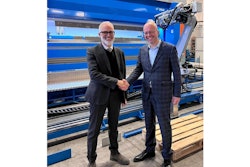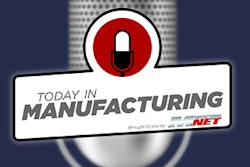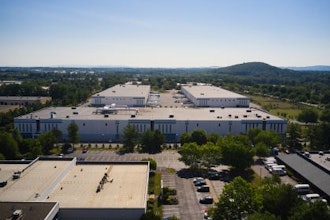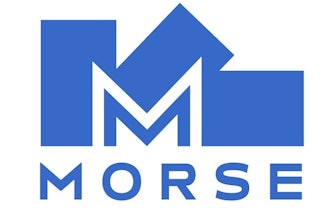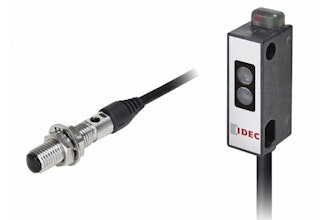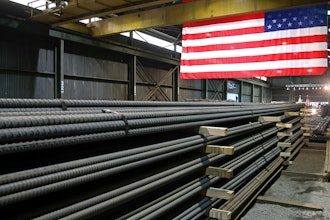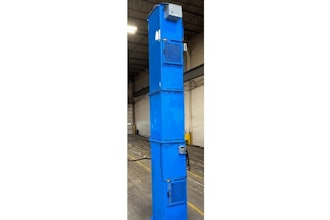
The generic definition of Lean Manufacturing is a production system that focuses on reducing waste, creating customer value and seeking continuous process improvement. It uses tools such as Kaizen, Visual Management, Kanban, Demand Management, Just in Time, Takt Time, Root Cause Analysis, Value Stream Mapping, and the 5s. The goal is to become a world-class Lean Enterprise where Lean is the basis for everything you do in every part of the company, and, as a result, the company improves product quality, operational performance, customer satisfaction, and profitability.
The industry has seen many well-publicized examples of Lean success in large corporations, including John Deere, Nike, Textron, and Kimberly-Clark. Honeywell's Six Sigma Plus program, which focused on the Lean concept of waste elimination and variation reduction, helped the company achieve $1.2 billion in cost savings from productivity improvements in 2012.
Lockheed Martin used a formal Lean Six Sigma program that ran 1,154 structured improvement activities, yielding more than $95 million in savings to improve productivity and competitiveness.
The list of successful Lean implementations at large corporations is long—perhaps because they have the staff and resources. However, they don't say whether the companies reached their overall objectives or simply used Lean practices for targeted cost-reduction projects.
While many U.S. manufacturers have adopted Lean Manufacturing principles, the overall success rate is moderate, with only a small percentage achieving significant benefits. In fact, many firms have struggled with Lean, and many have abandoned implementation efforts.
Most Lean studies show mixed results. For example, a 2007 Industry Week study found that nearly 70% of all U.S. plants used Lean, but only 2% achieved their objectives.
Another study discovered that 23% of companies achieved no progress with Lean, 35% made incremental improvements using some parts of Lean, like Kaizen, and 40% sustained a Lean culture and made significant, continuous improvements. However, as in the 2007 study, only 2% achieved all of their objectives.
The Long List of Lean Program Problems
Implementing Lean programs comes with a long list of problems, but here are some of the most significant difficulties:
Clarity of Objectives: Many companies fail to clearly understand why they are implementing Lean. By not specifying the objectives that they are trying to achieve, companies often fail.
Leadership Commitment: Top management must commit in a "hands-on, out-front matter," which includes staying in the office—and stopping short of delegating Lean to someone else. If leadership doesn't buy in and actively support implementation, the effort will quickly lose momentum.
A good example is Boeing, an early adopter of Lean Six Sigma. In the pressure to deliver airplanes, Boeing used the practice of traveled work in which tasks were delayed or completed in a factory location outside of the original plan. In other words, the company was moving the plane through production with defective parts to be fixed down the line.
Traveled work violates Lean Six Sigma in terms of building quality at the source and not moving the airplane through production with defective parts. Boeing should have stopped production until the defects were addressed, but it would have led to more late deliveries.
All of Boeing's production problems caught up to them when a door plug blew out on a 737MAX in January 2024. The FAA audited the Renton and Spirit Systems plants, and Boeing failed 33 of 89 product audits. The audits found problems with manufacturing process control, parts handling and storage, and product control.
Boeing management didn't commit to the program to change the culture or continuously improve production. Boeing supported Lean Six Sigma as long as it didn't interfere with deliveries or financial objectives.
Lean Consultants: Often hired as "experts," these consultants typically don't have experience with each client's products, processes and people. However, they must appear confident because consultants who show uncertainty are not hired. They tend to sell the idea that the principles of the Toyota Production System are universal. Still, there are big differences between a large auto assembly plant and a small machine shop. The overall lack of consultant experience is another reason for poor lean success.
Short-Term Focus: If the company is seeking short-term financial gain over long-term continuous improvement (see Boeing above), Lean is probably not the answer. Becoming a Lean enterprise requires changing every part of the company and culture, which is a commitment to a long-term process over short-term financial gains.
Improving Customer Value: Many companies claim their Lean system improves customer value without asking the customer. One way to monitor customers is via a "lost order report system." The idea is to put together a list of every order lost and then call each customer to find out the reason for it. It's difficult to prevent future lost orders or lost customers if you don't know why you lost the current order. Asking the customer to assess your products and services (mainly if you lost the order) should be part of the Lean system that covers improving customer value.
Toyota Production System (TPS): TPS was invented by a multinational automobile manufacturer and begs the question of whether it's practical to expect all manufacturing companies to emulate the processes and culture of a large Japanese automobile manufacturer. Of course, there are many applicable principles, but most companies should not try to be Toyota. The idea that a universal Lean production program fits all businesses is an illusion.
A Look at 3 Unique Types of Manufacturers
Small Companies: Large corporations have the time, resources, and employees to allocate for Lean projects. Small businesses may not have a stable revenue stream, their cost accounting is usually primitive, and they typically don't have ERP or fancy IT systems. While consulting for the National Institute of Standards and Technology's Manufacturing Extension Partnership (NISTMEP), I found that all small manufacturers suffer to some degree from F.A.C.T.S.:
- F: Fear
- A: Limited access to capital
- C: Cashflow problems
- T: Limited time
- S: Limited staff
The introduction of any new system must consider these limitations and whether a small company has the people, resources, and systems to implement Lean.
Job Shops: Contrary to what an army of consultants claims, Lean manufacturing does not work well in high-mix, low-volume job shops or machine shops. Lean works best when there are long runs of standard products (repetitive manufacturing).
Takt time is the heart of a Lean production system and is calculated by dividing available production time by customer demand. But how can you use Takt time if every customer order differs daily? Some estimate that about 10% of lean tools apply to job shops, such as ordering raw materials, reducing setup times and the 5S principles. A better solution for job shops is a Velocity Scheduling System, a manual, visual system used to schedule jobs.
Custom Machinery Manufacturers: For many years, I manufactured custom palletizer machines. Every palletizer was built from a customer specification in which they could specify the brand and model of every part on the machine, including "one-off" parts or assemblies. Every machine was different and had to be assembled and tested for the customer at the end of the production process.
The big problem for job shops and custom manufacturers is the Lean concept of Just-in-time (JIT) manufacturing. Like job shops, custom machinery manufacturers (with some exceptions) don't have repetitive manufacturing, which is fundamental to Lean Manufacturing requirements. There were many problems in trying to implement JIT, including:
- Increased part costs due to the setup time required for "one-off" parts.
- Not having inventory stock increases lead times.
- Material handling labor costs increase because of handling individual parts instead of batches.
- Shortages of critical parts during final assembly would result in missing the delivery date and increase overall lead times.
As a result of these problems, custom manufacturers can fail to deliver value to the customer, a primary goal of Lean. However, some Lean tools are applicable, like Kaizen, Visual Management, Kanban, Root Cause Analysis and 5s.
The Future
Lean principles are now being fused with Industry 4.0 technologies, such as the Internet of Things (IoT), manufacturing execution systems, data analytics, and artificial intelligence. This integration is supposed to enhance visibility, real-time decision-making, and predictive maintenance to make Lean practices more effective. But you need to walk before you run, so it is wise to master the fundamentals of Lean before jumping into digital Lean.
Is lean still the best answer? Yes. Lean doesn't work for every business or manufacturer—and many companies don't reach the ultimate goal of reducing waste, achieving the best workflow, maximizing customer value or becoming a lean enterprise.
Still, Lean is the best approach to improve a production system that has ever been devised. While challenges remain, the overall trajectory of lean manufacturing adoption in the U.S. points toward sustained growth and increasing integration across industries.
Even if a company doesn't realize its goal of becoming a Lean enterprise, there is a lot of value in using specific tools to achieve cost reduction and continuous improvement.
Michael Collins is the author of a new book, "Dismantling the American Dream: How Multinational Corporations Undermine American Prosperity." He can be reached at mpcmgt.net.




![Coilwinding At Badger Drive[85][53]](https://img.manufacturing.net/files/base/indm/multi/image/2025/02/Coilwinding_at_Badger_Drive_85__53_.67ad1e7b84381.png?auto=format%2Ccompress&fit=crop&h=167&q=70&rect=245%2C918%2C4401%2C2478&w=250)

